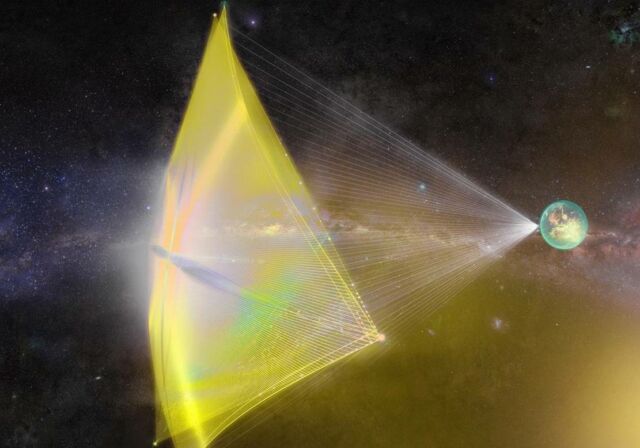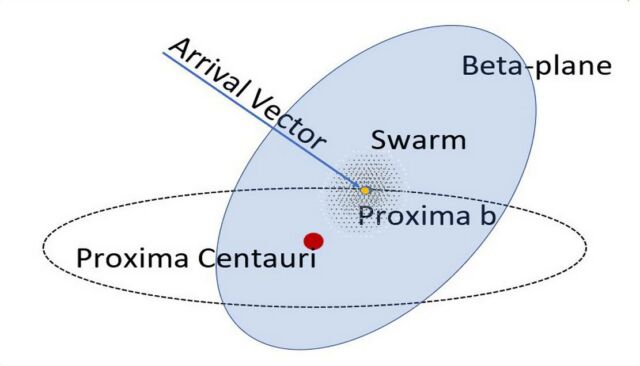 Credit NASA
Credit NASA
Swarming Proxima Centauri: Swarms with thousands of tiny probes could be capable of reaching another nearby star this century.
In the future, we might send swarms of small probes into space, each weighing just a few grams. These probes would be pushed by Earth-based powerful lasers, reaching incredibly fast speeds. To make this happen, we need advanced technology like strong lasers, durable sails for the probes, and large telescopes on Earth.
The plan is to send a big group of these tiny probes on a mission to Proxima Centauri b, a potentially habitable exoplanet, and send valuable information back to Earth.
 Graphic depiction of Swarming Proxima Centauri. Credit Thomas Eubanks
Graphic depiction of Swarming Proxima Centauri. Credit Thomas Eubanks
However, there are challenges. The probes are so small that they have limited power and communication abilities. To overcome this, having thousands of probes working together is the key.
Because the probes are far away and take a long time to send messages, they need to be smart on their own. They must decide what information to send back to Earth without our direct control. To achieve this, the probes create a network among themselves using low-power lasers and synchronize their internal clocks. This coordination allows them to send a powerful and synchronized signal back to Earth, greatly increasing the amount of data we receive.
source NASA





Leave A Comment